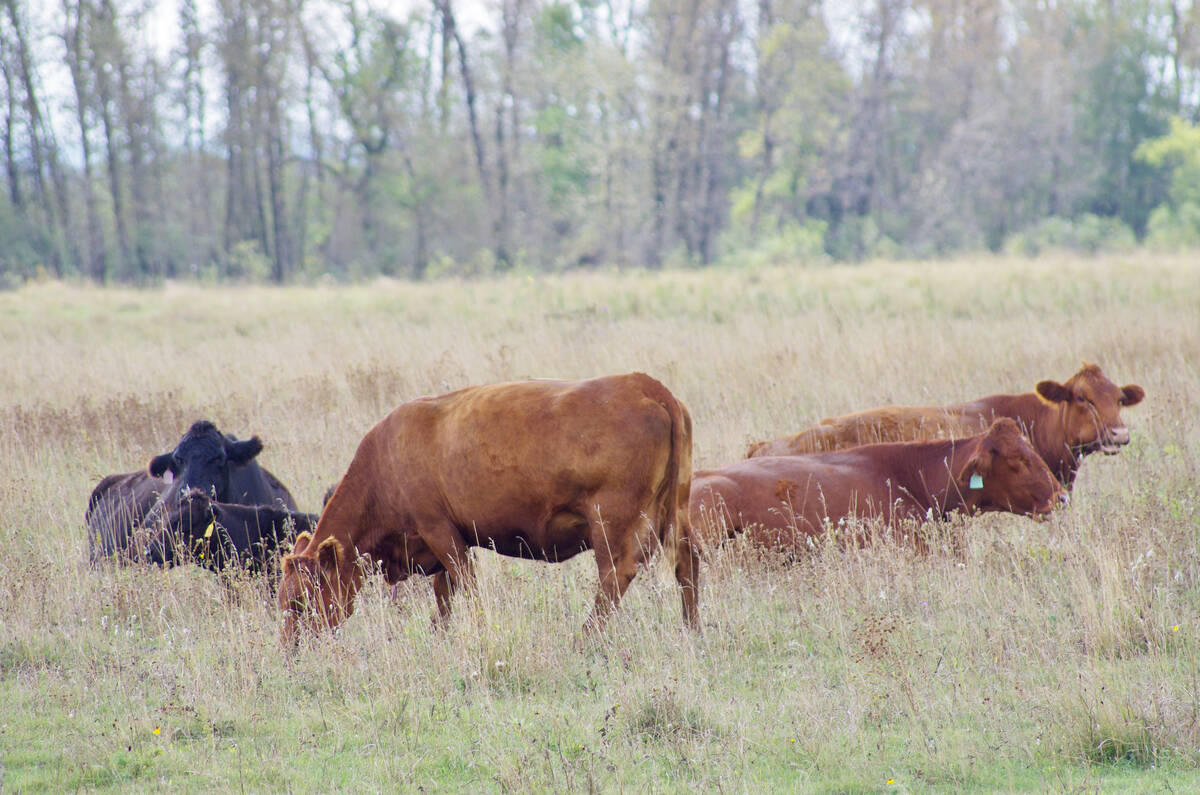Reviews of pension and capital costs at Canada’s two main railways will be factored into a substantial hike in the index that governs how much the railways can charge each year to haul Prairie grain.
The Canadian Transportation Agency on Monday announced a 9.5 per cent increase in its volume-related composite price index (VRCPI) to 1.2895, effective for the 2012-13 crop year starting Aug. 1.
The VRCPI is an inflation factor that reflects forecasted changes in Canadian National Railway (CN) and Canadian Pacific Railway’s (CP) costs for labour, fuel, material and capital purchases.
Read Also

U.S. livestock: Chicago cattle futures climb on post-Thanksgiving trade
Chicago | Reuters – Chicago Mercantile Exchange’s live and feeder cattle futures ticked up on Friday in a day of…
The index, which must be set each year by the end of April, is one factor in the CTA’s revenue caps on CN and CP. Each railway can set its own rates for grain freight as long as its total grain revenue each year is below its cap.
Monday’s increase follows hikes of 3.5 per cent in 2011 and seven per cent in 2010, and a 7.4 per cent decrease in 2009. The VRCPI has now grown at an average annual rate of 2.1 per cent since the 2000-01 period, the CTA said.
The regulatory agency, in December and March respectively, made changes to its methodologies for calculating the railways’ cost of capital, and for recognizing the railways’ pension costs.
On capital costs, the CTA will now rely on the weighted cost rate of equity "in a North American context" rather than just the Canadian financial market, and determine the market risk premium using "all available reliable information" dating back to 1951 for the Canadian cost of equity and 1954 for the U.S. cost of equity.
On pensions, the CTA will now consider any cash payments relating specifically to services rendered in that year, plus statutory pension plan deficit payments and pension administrative expenses incurred by the railway company.
CN and CP combined have made voluntary contributions of approximately $2.9 billion from 2009 to 2012 into their pension funds, the CTA noted.
The agency’s revisions on capital costs and pension costs each make one-time impacts on the VRCPI for 2012-13, worth 3.3 and 4.6 per cent, respectively.
"Recent agency decisions on methodologies, such as the cost of capital and pensions, demonstrate our commitment to sound regulatory practices and to making decisions in a fair and reasonable manner," CTA chairman Geoff Hare said in Monday’s release.
The CTA’s revenue caps on CN and CP apply to the movement of grain from Prairie elevators or from U.S. origins to terminals at Vancouver, Prince Rupert, B.C. and Thunder Bay, Ont. They also apply to CN’s and CP’s movements of grain bound for Eastern Canada or for export, up to either Thunder Bay or the CN station about 250 km north of the city at Armstrong, Ont.
"Unwarranted increases"
Prompted by the CTA’s announcement, the Western Canadian Wheat Growers Association on Monday said it has written to federal Transport Minister Denis Lebel calling for a full review of the railway revenue caps.
The latest change to the VRCPI "represents a significant jump in freight rates," the association’s president Kevin Bender said in a release. "The government needs to review the components of the revenue cap and come up with a better approach to ensure farmers are not hit with unwarranted freight increases."
The association said the "duopoly" in the Prairie rail industry "allows the two major railways to pass along cost increases to shippers without the usual discipline characterized by competitive markets."
Rather than adjusting the revenue cap just to reflect the railways’ cost increases, the association said, the CTA should be adjusting the cap "to reflect costs that would otherwise exist if competitive market forces were at play."
For instance, the association said, the railways have made "significant" productivity gains through increased train length, increased railcar capacity and more fuel-efficient locomotives.
The railways should profit from the productivity gains they’ve made through their investments, Bender said, but "there needs to be a mechanism to ensure a portion of these gains are passed on to farmers through lower freight rates."














